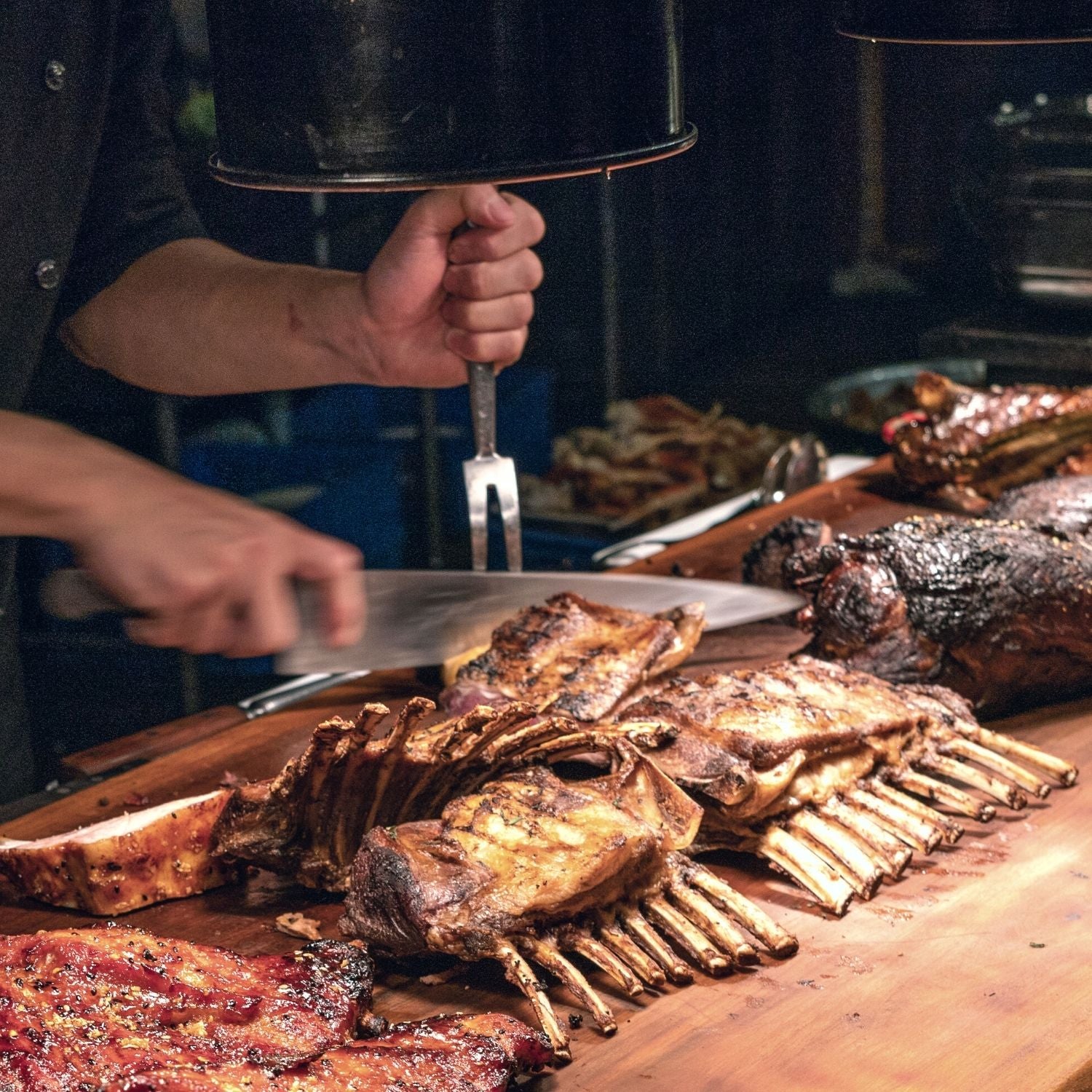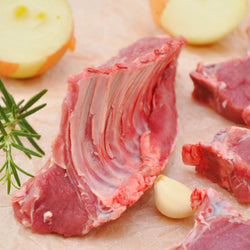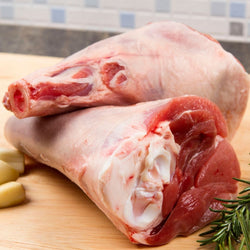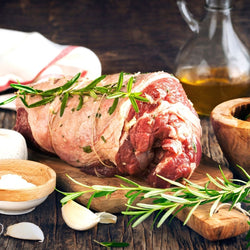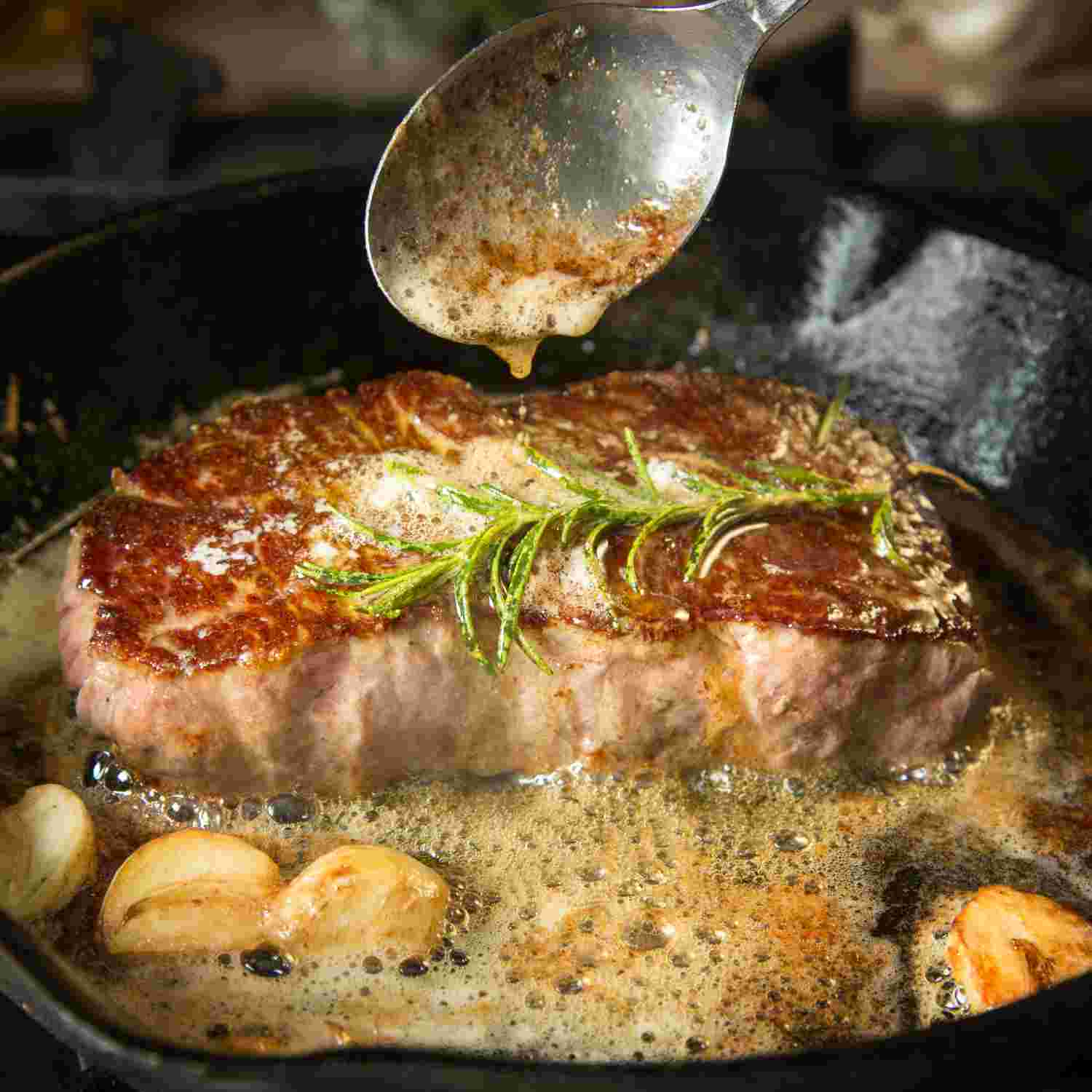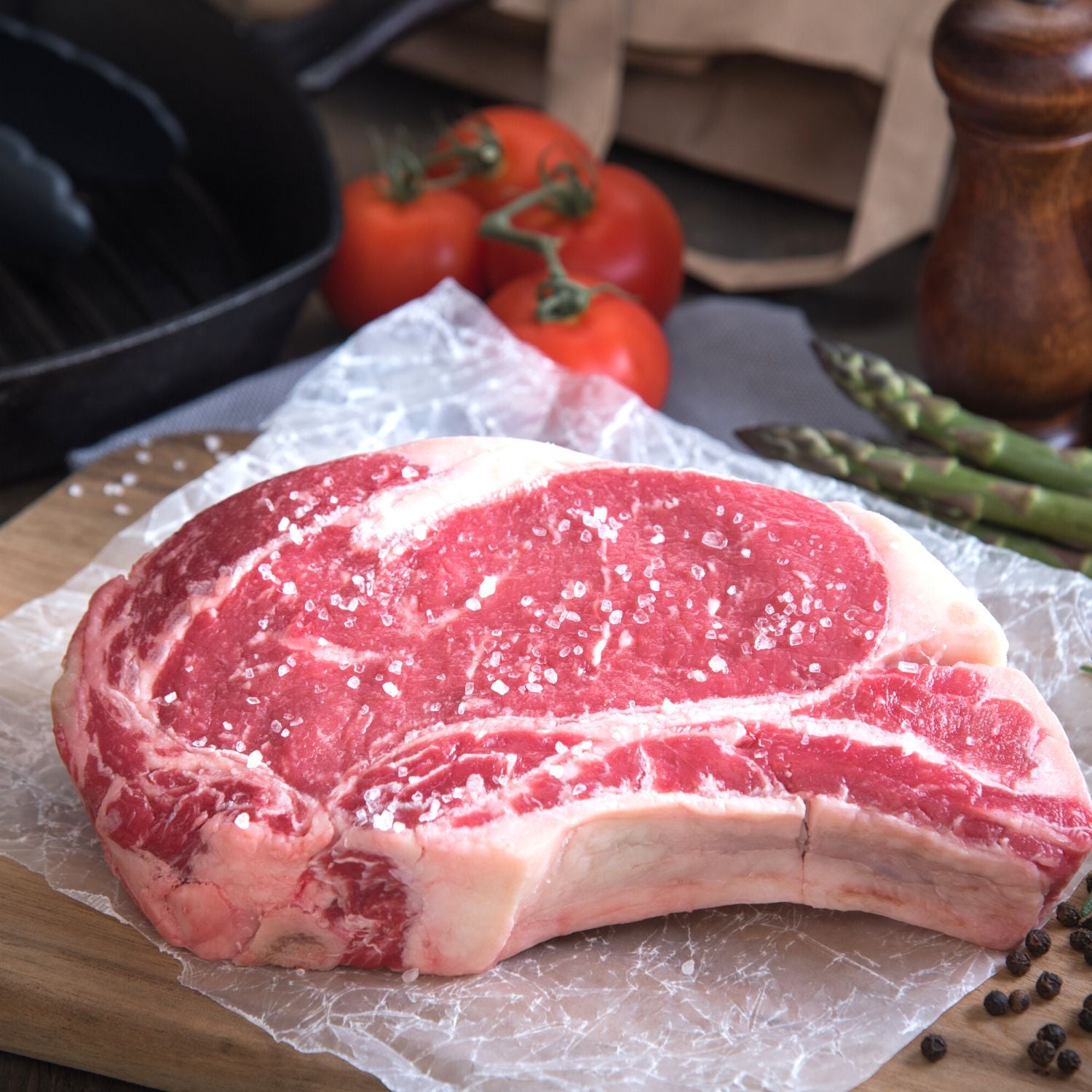A Guide to Different Cuts of Lamb: Which One to Choose from Meat King
When it comes to selecting the perfect cut of lamb, the options can be overwhelming. There are various cuts available, each with unique characteristics that can significantly impact the final taste and texture of your dish. In this guide, we will explore the different cuts of lamb and help you decide which one is the right choice for your next meal.
Lamb Leg
The leg of lamb is one of the most popular and versatile cuts. It can be purchased either bone-in or boneless, making it easy to customize according to your preferences. The meat from the leg is tender and flavorful, making it perfect for roasting, grilling, or braising. The bone-in option is often used for special occasions, such as Easter or Christmas, as it can provide a show-stopping centerpiece for the table.
A whole leg of lamb typically weighs between five to nine pounds, offering a generous portion for holiday feasts. This cut includes both the narrow shank and the plump sirloin, delivering a variety of textures and flavors.
Preparation Tips
- Seasoning: You can simply season the leg with salt and pepper or use a spice rub to enhance its natural flavors.
- Roasting: Roasting the leg with the bone in not only adds flavor but also creates an impressive presentation.
- Customization: There are several forms available, such as sirloin end, shank end, short leg, and frenched. These variations allow for different cooking methods and presentations.
For those who enjoy experimenting, ask your butcher to debone and butterfly the leg. This preparation allows you to splay it on the grill or stuff, roll, tie, and roast it for a unique culinary experience.
Lamb Shoulder
The shoulder is another excellent cut of lamb that is perfect for slow-cooking. It is rich in flavor, with a good amount of fat and connective tissue, making it perfect for stews, curries, and other hearty dishes. The shoulder can be purchased either bone-in or boneless, and the bone-in option is ideal for dishes that require a long cooking time.
How to Prepare and Cook Arm Shoulder Chops
Arm shoulder chops are a budget-friendly choice from the lamb's shoulder, renowned for their rich marbling and robust flavor. There are several delicious ways to prepare and cook them, each bringing out their unique taste and tenderness.
-
Marinating: Start by marinating the chops with your choice of herbs, spices, and acid. Ingredients such as garlic, rosemary, lemon juice, or a splash of olive oil work wonders. Allow the chops to soak in the marinade for at least an hour to ensure the flavors penetrate the meat.
-
Pan-Frying: Heat a skillet over medium-high heat and add a touch of oil. Once the oil shimmers, place the marinated chops in the pan. Sear each side for about 3-4 minutes until they reach a gorgeous golden-brown crust. Aim for medium-rare for optimal juiciness.
-
Broiling: Preheat your oven’s broiler and position a rack about 6 inches away from the heat source. Broil the chops for roughly 5-6 minutes per side. This method achieves a beautifully charred exterior while keeping the interior succulent and tender.
-
Braising: For a more tender finish, braising is an excellent choice. Brown the chops in a pot, then add red wine, broth, or a mix of both along with your favorite herbs like thyme or oregano. Cover and simmer on low heat for 1.5 to 2 hours. This slow cooking process breaks down the meat fibers, resulting in a melt-in-your-mouth experience.
Regardless of the method you choose, arm shoulder chops offer a versatile canvas for a multitude of flavors, transforming a simple meal into a gourmet experience. Enjoy experimenting with different herbs and cooking styles to find your perfect dish.
Understanding the Square-Cut Shoulder
The square-cut shoulder is a generous piece of meat that stands out for its rich marbling and distinct sweetness. This cut is derived from the shoulder section of the animal, where muscles tend to work harder compared to the leg area. As a result, the meat is less tender but packs a punch of flavor that's perfect for certain types of cooking.
Cooking Methods
Due to its texture, the square-cut shoulder shines when prepared through methods that allow time for the meat to become tender:
-
Slow Roasting: This technique involves cooking the meat at lower temperatures over an extended period, which enhances its juiciness and allows flavors to develop fully.
-
Braising: By cooking the meat slowly in a liquid at low heat, braising breaks down the toughness, making the meat succulent and flavorful.
-
Custom Preparations: Have the bones removed by a professional butcher and customize the cut to suit various recipes. It can be:
- Rolled and Tied: For a classic roast that’s both visually appealing and easy to slice.
- Cubed: Ideal for hearty stews where the meat absorbs the richness of broths and spices.
- Ground: Perfect for making burgers, moussaka, or traditional dishes like kibbeh, where spiced, ground meat is the star ingredient.
By choosing the appropriate cooking method, you can make the most of the square-cut shoulder's robust flavor and succulent texture.
What is Lamb Stew Meat, and Which Part is Best for Stewing?
Lamb stew meat is comprised of bite-sized chunks used to create savory, hearty stews. A wide variety of cuts from a lamb can be transformed into stew meat, offering rich flavors and tender textures when cooked slowly.
The shoulder cut is often the top choice for stewing. This area of the lamb provides meat that becomes especially tender and flavorful when subjected to the prolonged cooking processes typical in stewing and braising. For those interested in economizing their culinary endeavors, purchasing a deboned shoulder and cutting it into one-and-a-half-inch cubes at home is a cost-effective approach. This allows for greater control over the meat's size and quality.
Lamb Rack
The lamb rack is a prime cut that comes from the rib section. It is an impressive cut that is often used for special occasions, such as dinner parties. The meat is tender and juicy, with a slightly sweet flavor that is perfect for roasting. The rack can be purchased either frenched or un-frenched, with frenched meaning that the meat has been trimmed away from the ends of the bones for an elegant presentation.
Characteristics
A whole rack of lamb typically comprises seven or eight ribs from the center of the animal. This part of the lamb is renowned for its tenderness and rich flavor, making it a popular choice for gourmet meals and special gatherings.
Classic Preparation
One traditional method of preparing a rack of lamb involves creating a crust of herbs and coarse salt. This not only enhances the flavor but also adds a delightful texture. Roasting the rack over high heat ensures that the meat remains juicy while developing a beautifully crisp exterior.
Presentation
For an eye-catching presentation, you might consider having the rack frenched. This technique involves removing the layer of fat and thin strips of meat and muscle extending to the ends of the rib bones, leaving the bones clean and exposed. You can ask your butcher to do this or follow simple instructions to do it yourself.
Whether you're aiming for a classic approach or a modern twist, the lamb rack offers versatility and elegance, making it a centerpiece worthy of your culinary endeavors.
Understanding Rib Chops
What Are Rib Chops?
Rib chops are a popular cut of meat known for their tender texture and rich flavor. They consist of a luscious eye of lean, pink meat surrounded by a generous layer of tasty fat. This combination makes rib chops a top choice for both chefs and home cooks seeking a sumptuous dining experience.
Size Variations
Rib chops can vary significantly in size. On one end of the spectrum, you'll find smaller options, such as those from New Zealand, offering a delicate portion perfect for lighter meals. On the other hand, larger rib chops, like those from Colorado, provide a hearty, meaty serving ideal for satisfying more robust appetites.
Flavor Differences
The flavor of rib chops is influenced by their size and origin. Smaller rib chops often boast a subtle, refined taste, while their larger counterparts deliver a bold and intense flavor, enhanced by the thick layer of fat. This variation allows for diverse culinary possibilities, from elegant, gently seasoned dishes to richly seasoned, full-flavored meals.
Choose the size and flavor profile that best suits your recipe, and enjoy the versatility this cut of meat offers.
What Are Loin Chops, and How Are They Best Prepared and Served?
Loin chops are small, T-bone-like cuts that feature both a portion of the loin and the tenderloin of the lamb. Known for their supreme tenderness and leanness, they are among the most sought-after and expensive lamb cuts available.
Key Features of Loin Chops:
- Composition: Includes both loin and tenderloin parts.
- Texture: Exceptionally tender and lean.
- Size: Generally small and can be as thick as an inch or more, depending on preference.
Preparation Tips:
- Cooking Method: Loin chops shine when cooked quickly. Opt for grilling or broiling to achieve the best results.
- Crust and Color: These methods help form a caramelized crust while maintaining a pink and juicy center, particularly when cooked to medium-rare.
- Thickness for Doneness: Request chops that are at least an inch thick to ensure even cooking, especially if you prefer them medium-rare.
Serving Suggestions:
- Arrange loin chops with sides that complement their rich flavor, such as roasted vegetables or a simple salad.
- Garnish with fresh herbs like rosemary or thyme to enhance their natural taste.
In summary, loin chops are prized for their tenderness and leanness. When prepared correctly using high-heat methods like grilling or broiling, they provide a delightful contrast between a crispy exterior and succulent interior. Serving them with simple sides ensures the flavor of the meat stands out.
Lamb Shank
The lamb shank is a flavorful cut that comes from the lower leg. It is a tough cut that requires a long cooking time, making it perfect for stews and braises. The meat from the shank is tender and juicy, with a rich and meaty flavor that is perfect for hearty dishes.
How Are Sirloin Chops Typically Cooked and Served?
Sirloin chops, known for being a budget-friendly and hearty cut from the lamb's leg and hip, are versatile and flavorful. Here's how they're typically prepared and served:
-
Cooking Method: These chops are perfect for grilling or broiling due to their tenderness. You can easily replicate a steakhouse experience right at home by cooking them over high heat to lock in their natural juices and flavors.
-
Serving Suggestions: A classic way to serve sirloin chops includes a generous drizzle of mint sauce, which complements the rich flavors of the lamb. Pairing them with sides like scalloped potatoes adds a creamy texture, while creamed spinach enhances the meal with a fresh, velvety finish.
This combination of cooking and serving not only highlights the chop's savory qualities but also creates a satisfying and full-bodied dining experience.
The fore shank is the lower, muscular section of the lamb’s leg. Renowned for its robust flavor, this cut is ideal for recipes requiring prolonged cooking times. It's particularly suited for slow braising, where the lengthy process softens the tough connective tissue, resulting in tender, flavorful meat.
This cut shines in dishes like North African tagines, where its rich taste complements the aromatic spices used. The fore shank's deep, savory profile also pairs beautifully with garnishes that add contrast, such as a vibrant gremolata made from lemon zest and parsley. For those preferring a hint of sweetness, consider finishing your dish with an apricot chutney. These accompaniments highlight the complex flavors of the fore shank, making it a versatile favorite for hearty, slow-cooked meals.
What Are Neck Slices, and How Are They Used in Cooking?
Neck slices are thick, bone-in cuts of meat taken from the neck of a lamb. They're known for their affordability and robust flavor profile. These cuts are packed with collagen, a substance found naturally in red meat, which contributes to a rich, velvety texture in cooked dishes.
How Are Neck Slices Used in Cooking?
-
Stews and Braises: Their high collagen content makes neck slices perfect for slow-cooking methods. As they simmer, the collagen breaks down, enhancing the dish's depth and providing a luscious mouthfeel.
-
Ragus: In Italian cuisine, neck slices are often used to make hearty ragus. The long cooking process allows the meat to become tender and absorb the flavors of other ingredients.
-
Slow-Cooked Dishes: Whether you’re preparing a comforting stew or a savory ragu, lamb neck slices deliver an irresistible richness, making them a favored choice among chefs and home cooks alike.
Utilizing these flavorful cuts in your slow-cooked recipes not only elevates the dish but also makes for an economical option that promises gourmet results.
What is a Top Round Cut of Lamb, and How Can it Be Used in a Salad?
The top round cut of lamb is a relatively new option for meat lovers, commonly recognized for its size and versatility. This cut typically weighs between one to two pounds and originates from a large muscle in the leg. It carries the robust flavor characteristic of tougher cuts while still being tender enough for methods like grilling or pan-roasting.
How to Use Top Round in a Salad:
-
Grilling: Start by seasoning the lamb with your favorite herbs and spices. Grill it until it reaches your desired level of doneness, retaining its juicy and full-bodied flavor.
-
Slicing: Allow the meat to rest after grilling to keep it moist, then thinly slice it. This makes it easier to incorporate into your salad.
-
Serving: Lay the slices over a bed of mixed greens or a salad blend of your choice. Add complementary ingredients such as feta cheese, cherry tomatoes, or a citrus dressing to enhance the flavors.
By using a top round cut of lamb, your salad transforms from ordinary to a gourmet dish, offering a satisfying and flavorful experience.
When selecting a cut of lamb, it is essential to consider the cooking method and the final dish you want to create. Each cut has unique characteristics that can significantly impact the final flavor and texture of your meal. Whether you prefer a leaner cut or a more flavorful option, there is a lamb cut that is perfect for your needs.
In conclusion, selecting the right cut of lamb can be overwhelming, but with this guide, you can make an informed decision. The leg, shoulder, rack and shank are all excellent options, each with unique characteristics that can enhance your dish's flavor and texture. By considering your cooking method and the final dish you want to create, you can choose the perfect cut of lamb for your needs.

